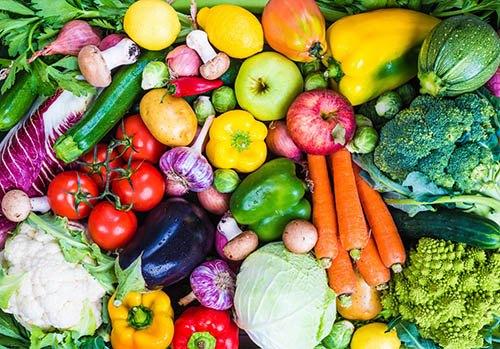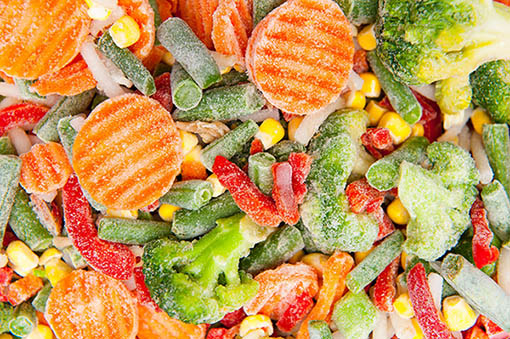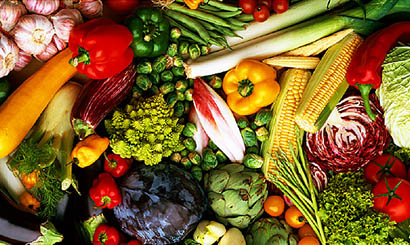Optimal storage conditions for vegetables

The optimal conditions are this, in which there is a maximum inhibition of all life processes, occurring in harvested vegetables, at the same time maintaining their good quality and commercial value. The main factors determining storage conditions, belongs: temperature, relative air humidity and gas composition of the atmosphere. Temperature affects the pace of life processes in stored vegetables. As the temperature increases, the intensity of breathing increases and the amount of heat released increases. In such a situation, the temperature in the storage room increases and the intensity of breathing and heat dissipation further increase, which leads to overheating of vegetables and their spoilage. There are several terms of temperature in storage:
1. Storage temperature, that is, the range of storage temperature for each species.
2. Vegetable temperature – temperature measured in the middle of the vegetables.
3. Air temperature in the chamber – is measured in a specific place in the storage and refrigeration chambers.
4. Optimum temperature, in which there is a maximum inhibition of life processes in vegetables, and enables the longest storage without compromising quality.
5. Freezing point, which causes the cell sap to freeze.
6. Lethal temperature, this is the temperature that freezes the juice combined with irreversible damage to the tissues.
7. Critical temperature, that is, the temperature of the vegetables, below which physiological damage occurs during storage for a certain period of time.
The optimal storage temperature for most vegetables is 0ºC. The temperature should not be lowered below 0ºC, because the quality and durability of the vegetables are then reduced. Only bulbs can be stored at temperatures below 0ºC.
| Table. Optimal storage conditions for perishable vegetables | ||||||||||||||||||||||||||||||||||||||||||||||||||||||||||||||||||
|
| Table. Optimal storage conditions for medium-term vegetables | |||||||||||||||||||||||||||||||||||||||||||||||||||
|
| Table. Optimal storage conditions for durable vegetables | |||||||||||||||
|
| Garlic | 0-1
-2- -3 |
60-70 |
| Chicory | -1-1 | 95-98 |
| Head cabbage | 0 | 90-98 |
| Carrot | 0-1 | 95-98 |
| Pasternak | 0-1 | 95-98 |
| Parsley | 0-1 | 95-98 |
| By | -1,5-0 | 95-98 |
| Salsefia | 0-1 | 95-98 |
| Root celery | 0-1 | 95-98 |
| Scorzonera | 0-1 | 95-98 |
| Shallot | 0 | 60-70 |
After harvesting, vegetables should be cooled, to reduce the intensity of breathing, the rate of maturation, ethylene production and maintain good quality during storage and transport. Vegetables are cooled down in two stages. The first step immediately after harvesting is to lower the temperature O 90%, and then transferring the vegetables to the cooling chamber where the second stage of cooling to the right temperature will take place. In practice, vegetable cooling is used:
1. Chłodnym powietrzem – persistent vegetables are stored in a chamber at air temperature (OC). The process continues 18-48 Hours.
2. Schładzanie w lodowatej wodzie – consists in dipping or spraying vegetables with water at a temperature below (1OC), the process takes approx. 10-30 minutes. This method is recommended for vegetables: broccoli, chicory, endywia, string-bean, green peas, cauliflower, maize, rhubarb, celery, spinach.
3. Próżniowe schładzanie – takes place in gas-tight containers by reducing the pressure from 1010 hPa do 6-8 hPa. The process is ongoing 10-20 min., it is suitable for leafy vegetables.
4. Schładzanie kruszonym lodem – used when no other methods are available, most often during transport. In addition to lowering the temperature, cooling in crushed ice increases the relative humidity of the air, and thus good firmness and commercial value of vegetables.
The water content in vegetables is high and, depending on the species, amounts to 65-98%. When vegetables are stored at low relative humidity, this causes large losses due to transpiration. Different types of vegetables require an optimal level of relative humidity. Therefore, vegetables like onions, garlic, and shallots intended for long storage require the lowest level of relative air humidity. Vegetables requiring a higher level of relative humidity approx. 90-95% it is white cabbage, red and Italian. In contrast, root vegetables require the highest level of relative humidity.
Life processes and the length of storage of vegetables are greatly influenced by the concentration of oxygen and carbon dioxide. A controlled atmosphere allows you to extend the shelf life of vegetables under appropriate conditions, i.e.: maintaining the optimal temperature for a given vegetable species and lowering the oxygen concentration and increasing the concentration of carbon dioxide in the chamber. Storage at ULO is the most common (Ultra low oxygen), that is, in a controlled atmosphere with very low oxygen levels, where the O2 concentration is below 2% (often 1,01,2%) and concentration, CO2 at the level 2,5% (often 2-3%).
| Tab.5. Gas composition of the atmosphere recommended for storing vegetables (wg F. Adamicki) | ||||||||||||||||||||||||||||||||||||||||||||||||||||||||||||||
|
||||||||||||||||||||||||||||||||||||||||||||||||||||||||||||||
| *Chinese cabbage – depending on the variety | ||||||||||||||||||||||||||||||||||||||||||||||||||||||||||||||
Another way to obtain controlled atmosphere conditions is to store vegetables in chambers under reduced pressure. This method consists in reducing the pressure from 101 kPa on 10,1 kPa, which reduces oxygen and ethylene and completely inhibits fruit ripening. To maintain a constant negative pressure, air must be constantly sucked out of the chamber, and thus ethylene and the carbon dioxide produced.
Ethylene plays an important role in the post-harvest physiology of vegetables, which is a plant hormone and works in very low concentrations from 0,05 do 10 ppm (1 ml of ethylene per 1000 l of air). Climacteric fruits and vegetables (apples, pears, tomatoes, melons) are the main source of ethylene, therefore it is not recommended to store fruit and vegetables together. Hormones ten, even in small amounts it causes degradation of chlorophyll in many species (lettuce, broccoli). High concentrations of ethylene are very dangerous, because concentration 3% ethylene in the air can cause an explosion.
The effect of ethylene on vegetables:
• beneficial – accelerates the ripening process and uniform coloring of fruit, e.g.: tomatoes;
• negative – accelerates the respiration and aging process of vegetables, which shortens the period of their storage (lettuce, celery). It can also make beets bitter, softening of cucumbers or wood of cauliflower roses.
| Table. Classification of some vegetables in terms of sensitivity to the effects of ethylene (wg A.A. Kadera i in.) | ||||||||||||||||||||||||||||||||||||||||||||
|
||||||||||||||||||||||||||||||||||||||||||||
| It follows, that all vegetables are green, deciduous leaves are very sensitive to the effects of ethylene. In studies on the effects of ethylene, it was proved that green tomatoes were better colored by stimulating the formation of lycopene. |
Sometimes accelerating the ripening of the fruit, ethylene improves not only the color, but the taste and aroma of the fruit (melon, tomato).
In storage rooms, the effects of ethylene can be limited by ozone treatment. In cooling chambers it is very important to exchange air and collect the heat contained in vegetables, as well as air circulation, to maintain the right temperature. The air circulation is forced by the operation of the cooling fans, where the fan performance must be adapted to the size of the chamber. On the other hand, the exchange of air consists in removing the air from the chamber by continuously forcing fresh outside air.
For the health of vegetables intended for storage, it is important to disinfect rooms and packages, which allows to limit the occurrence of fungal diseases and reduce the infestation of vegetables. If the vegetables are stacked, it should be, change the mounding site every year.




